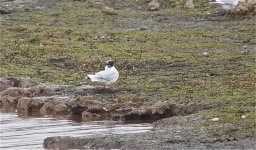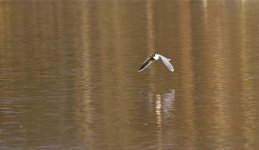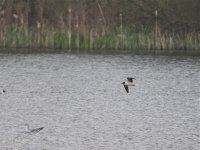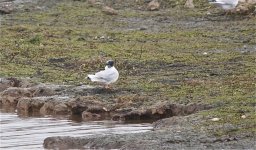-
Welcome to BirdForum, the internet's largest birding community with thousands of members from all over the world. The forums are dedicated to wild birds, birding, binoculars and equipment and all that goes with it.
Please register for an account to take part in the discussions in the forum, post your pictures in the gallery and more.
You are using an out of date browser. It may not display this or other websites correctly.
You should upgrade or use an alternative browser.
You should upgrade or use an alternative browser.
Upton Warren (26 Viewers)
- Thread starter andythomas
- Start date
More options
Who Replied?Phil Andrews
It's only Rock and Roller but I like it

The two Black-winged Stilts flew off south-west from Clayhanger (Brownhills, West Mids) at 6:50pm; I am hoping for a early morning call tomorrow to tell me they are on the Flashes (dont let me down Mr Jackson!)
There is one record of this elegant and distinctive wader at Upton Warren. One bird was present at the Flashes on the 21st and 22nd May 2006, found by Clive Lee first thing in the morning which then stayed for the remainder of the day and also for the following day. This individual was thought to have been one of three Black-winged Stilts that had been present for several weeks at Martin Mere WWT in Lancashire; the other two birds remained there and attempted to breed. With Avocets also present, the Flashes looked more like the Camargue than Worcestershire! This represented only the second county record for Worcestershire, the first being a bird which spent three days at Larford in June 1986. There is also an unsubstantiated report of a Black-winged Stilt referred to in Bill Oddie’s “Gone Birding”.
Attached is Andy Warr's photo taken on the first day of the stilt's stay.
There is one record of this elegant and distinctive wader at Upton Warren. One bird was present at the Flashes on the 21st and 22nd May 2006, found by Clive Lee first thing in the morning which then stayed for the remainder of the day and also for the following day. This individual was thought to have been one of three Black-winged Stilts that had been present for several weeks at Martin Mere WWT in Lancashire; the other two birds remained there and attempted to breed. With Avocets also present, the Flashes looked more like the Camargue than Worcestershire! This represented only the second county record for Worcestershire, the first being a bird which spent three days at Larford in June 1986. There is also an unsubstantiated report of a Black-winged Stilt referred to in Bill Oddie’s “Gone Birding”.
Attached is Andy Warr's photo taken on the first day of the stilt's stay.
Attachments
Last edited:
Phil Andrews
It's only Rock and Roller but I like it

Adult Little Gull reported still at the Moors Pool and three Arctic Terns through
Last edited:
upstarts1979
Well-known member
Food shortage at the Flashes?
One aspect of the spring that some of you might not be aware of, is the daily arrival of Tufted duck from the Moors. They usually start appearing from late March and continue into June. They spend much of the day feeding in the 1st Flash and occasional incursions on to the 3rd Flash. When not feeding they loaf around on the islands or grassy margins. On one occasion they did actually breed on the Flashes. Like many other species of waders and duck they were probably taking advantage of a seasonal glut of food, to supplement their 'insufficient' diet at the Moors pool. The flock at the Flashes would vary from 10 to 40 at times and the night time was when the bulk of the flock would arrive. However birds could be seen moving between the two sites throughout the day. Unfortunately this year this event has not materialised, a few birds have been reported but I personally have not seen 1. The numbers at the moors are as normal, so I can only conclude that at present the food supply has not yet appeared, if at all it will this year. Neither the 1st or 3rd Flash dried last summer/autumn in fact the 3rd flash stayed as high as ever. The 1st Flash did however drop considerably, so whatever the tufted feed on in is missing. Unless there is another factor at play, maybe the strange weather patterns over the last few weeks has changed something we are unable to detect.
You watch, they will be there tomorrow 8-P
One aspect of the spring that some of you might not be aware of, is the daily arrival of Tufted duck from the Moors. They usually start appearing from late March and continue into June. They spend much of the day feeding in the 1st Flash and occasional incursions on to the 3rd Flash. When not feeding they loaf around on the islands or grassy margins. On one occasion they did actually breed on the Flashes. Like many other species of waders and duck they were probably taking advantage of a seasonal glut of food, to supplement their 'insufficient' diet at the Moors pool. The flock at the Flashes would vary from 10 to 40 at times and the night time was when the bulk of the flock would arrive. However birds could be seen moving between the two sites throughout the day. Unfortunately this year this event has not materialised, a few birds have been reported but I personally have not seen 1. The numbers at the moors are as normal, so I can only conclude that at present the food supply has not yet appeared, if at all it will this year. Neither the 1st or 3rd Flash dried last summer/autumn in fact the 3rd flash stayed as high as ever. The 1st Flash did however drop considerably, so whatever the tufted feed on in is missing. Unless there is another factor at play, maybe the strange weather patterns over the last few weeks has changed something we are unable to detect.
You watch, they will be there tomorrow 8-P
Last edited:
upstarts1979
Well-known member
John
Could this phenomenon be looked at another way? Perhaps the Tufted Ducks haven't had to move (from their previously "insufficient" diet at the Moors) on to the Flashes.
SJV
You could look at it that way Sy, but it would be the first time in 30 years that it has happened. I will dig my notes out to see how the spring, that followed the drought year affected the birds at the Flashes.
B
forgetfulelephant
Well-known member
At the Moors this pm: LRP 2, C. Sand 2, Gadwall 2 males, C. Tern 1, Little Gull 1, Oycs 4, Avocet 4, Buzzard 1, C. Snipe 1, Cormorant 1, Starlings 12, possible Common Gull & possible White Wagtail reported.
Rob
Rob
Gavo
Well-known member
Spent an enjoyable hour at the Moors this afternoon, among the highlights were little gull, common tern, common gull (over) and a kingfisher catching a fish then sitting on the sluice gate and bashing it to death (not so enjoyable for the fish), would of made for some awesome photographs had I had any interest in photography :eek!:
Phil Andrews
It's only Rock and Roller but I like it

At the Moors this pm: LRP 2, C. Sand 2, Gadwall 2 males, C. Tern 1, Little Gull 1, Oycs 4, Avocet 4, Buzzard 1, C. Snipe 1, Cormorant 1, Starlings 12, possible Common Gull & possible White Wagtail reported.
Rob
Hi Rob - same Little Gull as yesterday?
upstarts1979
Well-known member
anybody been to the Flashes , if so 'out about' :t:
forgetfulelephant
Well-known member
Hi Rob - same Little Gull as yesterday?
Not sure Phil, se what you think. First pic is todays, 2 & 3 are yesterdays.
Rob
Attachments
forgetfulelephant
Well-known member
anybody been to the Flashes , if so 'out about' :t:
I didn't but think Spoonbill Finder was going over.
To add to earlier sightings: Male Kingfisher, Female Sparrowhawk, Sedge Warbler, Kestrel.
Rob
Phil Andrews
It's only Rock and Roller but I like it

Not sure Phil, se what you think. First pic is todays, 2 & 3 are yesterdays.
Rob
Thanks for putting the photos alongside each other; the head markings (although held at different angles) appear to be similar.
Spoonbill Finder
Well-known member
anybody been to the Flashes , if so 'out about' :t:
I was at the Flashes at 6am hoping to beat Dave Jackson in finding the Black-winged Stilts:-O. I beat him there...just - but the Stilts failed to show|
8 Avocets, 7 LRPs, 2 Oystercatchers, 1 Redshank (flew in at 0640 and left 10 minutes later), 1 Common Sand, 2 Gadwall (pair), 2 Shelduck, 1 Common Gull, 1 Common Tern, 3 LBBGs, 250+ BHGs, 2 Stock Doves.
There were 6 GC grebes on the Sailing Pool plus 1 Grey Wagtail and 1 Kingfisher.
I returned to the Flashes later in the afternoon where a Green Sand had dropped in. Incidentally, there were 40+ swallows over the Sailing Pool at 1730 plus a single Sand Martin
Spoonbill Finder
Well-known member
At the Moors this pm: LRP 2, C. Sand 2, Gadwall 2 males, C. Tern 1, Little Gull 1, Oycs 4, Avocet 4, Buzzard 1, C. Snipe 1, Cormorant 1, Starlings 12, possible Common Gull & possible White Wagtail reported.
Rob
In addition to Rob's sightings I also noted 3 Teal (1male) and 3 Snipe in total.
biking birder 2010
Well-known member
Went to the Moors yesterday evening.
reed warbler singing and showing well by the causeway. Otherwise as reported earlier - ad. little gull, 2 sedge warblers, 3 snipe, 2 common sand, 1 LRP, 4 oyks, etc
reed warbler singing and showing well by the causeway. Otherwise as reported earlier - ad. little gull, 2 sedge warblers, 3 snipe, 2 common sand, 1 LRP, 4 oyks, etc
Phil Andrews
It's only Rock and Roller but I like it

Saturday 21st April
Both the Flashes and the Moors were covered from 06:15 today when there was still a frost on the ground; sightings so far:
MOORS POOL
6 Oystercatchers, 1 lapwing, 4 Snipe, 1 Gadwall (m), 4 Teal (pairs + 2f), 6 Greylag Geese, 3 Grey Heron, 1 Cormorant, 5 Herring Gull, 5 LBB Gull, 1 Common Tern (seen earlier at the Flashes), 40 Tufted Duck, 7 GC Grebe, 44 Canada Geese, 4 Moorhen, 34 Coot, 10 Mallard, singing warblers - 7+ Blackcap, 1 Willow W, 3 Sedge W and 1 Reed W, Kingfisher, Jay, Buzzard hunting around the Broadmeadow Pool (often perching on the fox fencing), male + female Sparrowhawks, Peregrine, Ringed Plover / LRP flew south, good numbers of Bullfinch.
FLASHES
13 Avocet, 7 LRP, 10 Lapwing, 10 Coot, 3 Moorhen, 1 Herring Gull, 1 Common Gull, 3 Canada Geese, 1 Snipe, 2 Shelduck, 14 Mallard, 2 Gadwall, 2 LBB Gull, Reed and Sedge W singing at the Hen Pool.
SAILING POOL
2 GC Grebe, 9 Mallard, 15 Canada Geese
This afternoon's showers will hopefully see something of interest drop in.
Both the Flashes and the Moors were covered from 06:15 today when there was still a frost on the ground; sightings so far:
MOORS POOL
6 Oystercatchers, 1 lapwing, 4 Snipe, 1 Gadwall (m), 4 Teal (pairs + 2f), 6 Greylag Geese, 3 Grey Heron, 1 Cormorant, 5 Herring Gull, 5 LBB Gull, 1 Common Tern (seen earlier at the Flashes), 40 Tufted Duck, 7 GC Grebe, 44 Canada Geese, 4 Moorhen, 34 Coot, 10 Mallard, singing warblers - 7+ Blackcap, 1 Willow W, 3 Sedge W and 1 Reed W, Kingfisher, Jay, Buzzard hunting around the Broadmeadow Pool (often perching on the fox fencing), male + female Sparrowhawks, Peregrine, Ringed Plover / LRP flew south, good numbers of Bullfinch.
FLASHES
13 Avocet, 7 LRP, 10 Lapwing, 10 Coot, 3 Moorhen, 1 Herring Gull, 1 Common Gull, 3 Canada Geese, 1 Snipe, 2 Shelduck, 14 Mallard, 2 Gadwall, 2 LBB Gull, Reed and Sedge W singing at the Hen Pool.
SAILING POOL
2 GC Grebe, 9 Mallard, 15 Canada Geese
This afternoon's showers will hopefully see something of interest drop in.
Last edited:
upstarts1979
Well-known member
To add to Phil's listBoth the Flashes and the Moors were covered from 06:15 today when there was still a frost on the ground; sightings so far:
MOORS POOL
6 Oystercatchers, 1 lapwing, 4 Snipe, 1 Gadwall (m), 4 Teal (pairs + 2f), 6 Greylag Geese, 3 Grey Heron, 1 Cormorant, 5 Herring Gull, 5 LBB Gull, 1 Common Tern (seen earlier at the Flashes), 40 Tufted Duck, 7 GC Grebe, 44 Canada Geese, 4 Moorhen, 34 Coot, 10 Mallard, singing warblers - 7+ Blackcap, 1 Willow W, 3 Sedge W and 1 Reed W, Kingfisher, Jay, Buzzard hunting around the Broadmeadow Pool (often perching on the fox fencing), male + female Sparrowhawks, Peregrine, Ringed Plover / LRP flew south, good numbers of Bullfinch.
FLASHES
13 Avocet, 7 LRP, 10 Lapwing, 10 Coot, 3 Moorhen, 1 Herring Gull, 1 Common Gull, 3 Canada Geese, 1 Snipe, 2 Shelduck, 14 Mallard, 2 Gadwall, 2 LBB Gull, Reed and Sedge W singing at the Hen Pool.
SAILING POOL
2 GC Grebe, 9 Mallard, 15 Canada Geese
This afternoon's showers will hopefully see something of interest drop in.
Moors: at least 10 herring gulls either 1st or 2nd summer. c150 hirundines (mostly swallows) after heavy rain. Reed warbler at least 2 north moors. Grey herons catching loads of fish in the scrape section of Amy's marsh.
Flashes:greylag, Tufted 2 on 1st Flash (1st I have seen there this year), Green sand, sedge w to south of new hide, rook,
B
This was a warm up for the 'all-dayer' (only 12 hours though) scoring 64 species. Missing , little grebe, sparrowhawk, mistle thrush, treecreeper, goldcrest and a good few migrants. I think Paul H (beyonder) also had 64 on his trial run.
upstarts1979
Well-known member
Went to the Moors yesterday evening.
reed warbler singing and showing well by the causeway. Otherwise as reported earlier - ad. little gull, 2 sedge warblers, 3 snipe, 2 common sand, 1 LRP, 4 oyks, etc
I think Gaz also had 2 water rail in swampy bottom.
Similar threads
- Replies
- 1
- Views
- 1K







